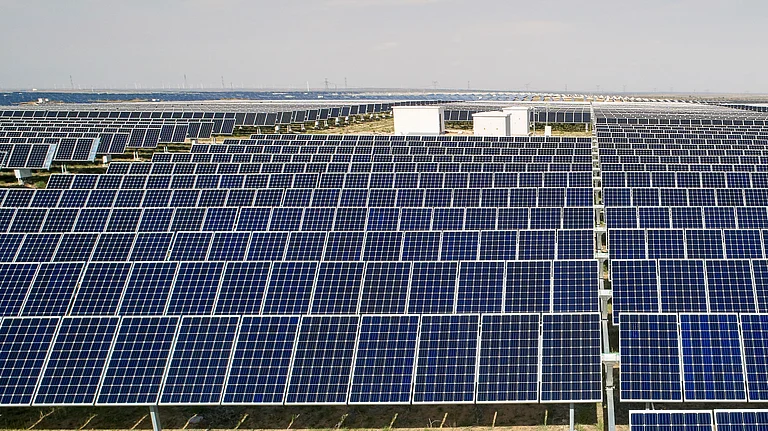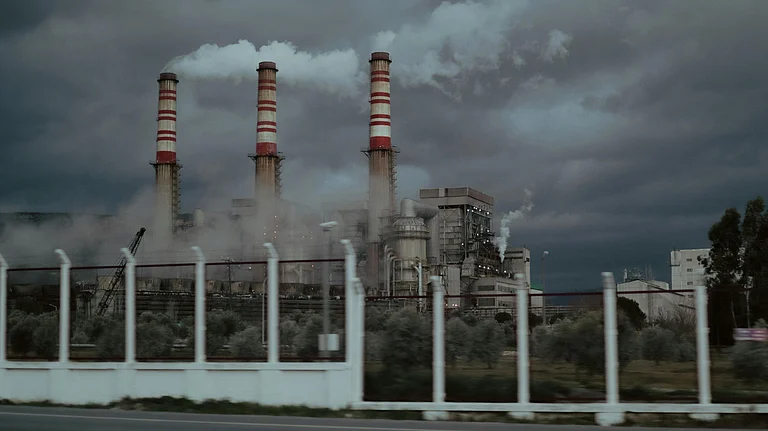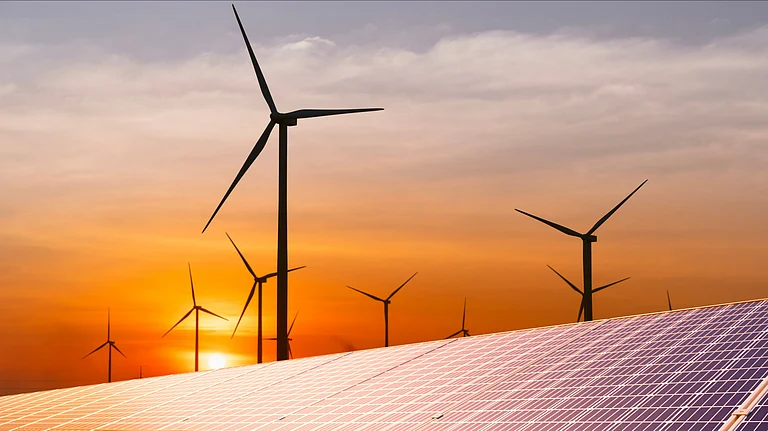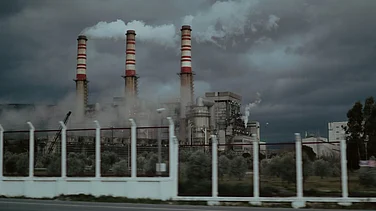
Generation Outpaces Grid: Over 50 GW of renewable capacity remains stranded due to inadequate transmission and delayed PPAs, despite India’s strong progress in clean energy generation.
Transmission Bottlenecks: Annual transmission expansion lags 40% behind targets, hindered by slow clearances, fragmented planning, and the geographical mismatch between generation and demand centres.
Storage Shortfall: India has just 205 MW of battery storage against a projected need of 411 GWh by 2032, making it impossible to shift surplus solar power to evening hours.
Urgent Reforms Needed: Achieving the 500 GW goal will require faster project clearances, coordinated Centre-state planning, and massive investments in both grid and storage infrastructure.
India made impressive strides in renewable energy in recent years, with record capacity additions in recent years. However, the country’s power- transmission network has struggled to keep pace, leading to a clear gap between the generation and the evacuation infrastructure. The result?
Over 50 GW of renewable energy capacity, enough to provide clean energy to 80-85 million households, cannot start operations and an extra 100 million tonnes of carbon dioxide is being released daily into the atmosphere, all due to the lack of power cables and delays in the signing of power purchase agreements.
The Ambition
Lapses on the transmission side can not only impact the environment and economic development, but also derail the country’s energy transition strategy. During the COP26 summit in 2021, India committed to installing 500 GW of non-fossil fuel based power capacity by 2030, with solar energy contributing the largest share at 280 GW, followed by 140 GW from wind power, with hydropower, bioenergy, and nuclear energy chipping in with the rest.
So far, India’s progress has been significant. According to the latest data from Ministry of New and Renewable Energy (MNRE), India’s non-fossil fuel capacity currently stands at 256 GW and is expected to reach around 300 GW soon, with over 40 GW of renewable energy projects in advanced stages such as signing power purchase agreements (PPAs) and securing transmission connectivity.
Among the key drivers for this clean revolution have been advances in technology and scale that have helped drive down costs. “The cost of installing panels whether on rooftops or utility-scale plants has fallen dramatically over the years,” points out Gaurav Upadhyay, Energy Finance Specialist at Institute for Energy Economics and Financial Analysis (IEEFA).
However, going forward, even the government acknowledges that maintaining this pace of growth will require an amended playbook. “In the last decade, India’s renewable energy capacity has grown more than fivefold, from under 35 GW in 2014 to over 197 GW (excluding large hydro) today. The next leap requires not just more megawatts, but deeper system reforms,” the MNRE Ministry said in a press statement this month.
The challenges related to the transmission network stem from essentially three sources — delayed execution, fragmented planning and the fluctuating nature of renewable power generation. First, let us look at the last element — the fluctuating nature of power generation from renewable sources.
Grid Under Pressure
Designers of power transmission grids have always taken into account the need for a certain level of over capacity. This is because the demand for power varies significantly by the time of the day, and even season. For example, a grid catering primarily to a residential population may see peak demand in the evenings and summers, while an industrial area may see peak demand during day time.
While historically, this cycle has primarily been demand led, the rise of renewables has led to the emergence of supply led fluctuations as renewables do not produce electricity at a uniform, or even predictable, pattern.
Hence, on the days of high solar output, producers are often forced to curtail generation, leading to wasted energy and losses for developers. On the other hand, output can drop significantly on cloudy or rainy days, leading to underutilization of the grid and undersupply. Similar fluctuations are also seen on the grids connected to wind farms, with the variations connected to atmospheric conditions rather than insolation. According to Mercom Clean Energy Insights, since March 2025, nearly 4 GW of Wind-solar energy has been curtailed only in Rajasthan due to delays in transmission projects and lower power demand due to above-normal rainfall this year.
It is therefore not surprising that India’s electricity grid infrastructure, designed decades ago for the steady supply generated by coal-based thermal power plants, is struggling to accommodate the variable and intermittent nature of renewable energy. A significant portion of renewable power often goes unused due to transmission bottlenecks and fluctuating demand, pointed out Upadhyay. “This oversupply has even driven daytime spot market prices into negative. India needs to ramp up its energy storage so excess solar power generated during the day can be stored and used later,” he added.
Nikhil Nahar, Co-founder of SolarSquare, pointed out that operating a grid in today’s times has become far more complicated than it was in an era of predictable generation and demand, leading to the need for more sophisticated designs and advanced grid management tools. “This intermittency demands real-time balancing, flexible generation sources, and advanced forecasting tools—areas where India’s grid still lacks depth,” he noted.
Compounding the challenge is the geographical mismatch between generation and demand. Much of India’s renewable energy is being generated in states like Rajasthan, Gujarat, and Tamil Nadu, far from industrial demand centres such as Maharashtra, Delhi, and Karnataka. The mismatch between where power is produced and where it is consumed, which leads to evacuation difficulties, has become one of the most serious structural challenges in India’s energy transition.
“Several auctioned renewable projects remain stranded as PPAs stall and transmission lags especially in Rajasthan and Gujarat, where 8-11 GW is stuck,” Upadhyay noted.
The Infrastructure Gap: Transmission and Storage
The second factor behind the grid’s inability to support the growth of renewable power is a lack of investment, giving rise to a widening infrastructure gap between the pace of renewable capacity additions and the development of supporting transmission and storage systems.
Despite increased private sector participation under Tariff-Based Competitive Bidding, India’s overall transmission expansion has been slow and remains below National Electricity Policy targets. Annual transmission line additions have fallen short of planned levels since FY2019, with only FY2021 surpassing expectations.
According to the recent Transmission expansion trails renewable energy growth in India report by IEEFA and JMK Research: “In FY2025, 8,830 circuit kilometres (ckm) of new transmission lines were commissioned against a target of 15,253 ckm, representing a 42% gap, with Inter-State Transmission System (ISTS) additions at their lowest in a decade.”
“The challenge begins right from the planning stage of a transmission project,” said Vishal Tripathi, Former Public Policy Expert at NITI Aayog. “These assets often have to pass through forest areas, defence land, agricultural zones and commercial properties, each requiring multiple clearances and permissions from different authorities.”
However, transmission is only part of the puzzle. The intermittency of renewables means that to complete the transition, the grid must be connected with energy storage facilities. However, this is also an area which is at its infancy in India.
The country’s current installed capacity of Battery Energy Storage System (BESS) is at just 205 MW whereas, according to the Central Electricity Authority (CEA) estimates, the country will need 411.4 Gigawatt-hour (GWh) of energy storage systems by 2031-32. Of this, around – 236.2GWh, is expected to come from battery energy storage systems (BESS) and the remaining 175.2 GWh from pumped-hydro storage plants.
Upadhyay of IEEFA points out that we cannot move away from our reliance on thermal plants until we get this part of the puzzle right. “We don’t yet have enough storage to shift daytime solar power to evening hours.”
Policy and Institutional Bottlenecks
The third element hampering the growth of transmission capacity in India is gaps in planning. The CEA, the central government agency in charge of transmission, has prepared a detailed National Electricity Plan (Transmission) to build up 500 GW of renewable energy transmission capacity by the year 2030 and 600 GW by 2032.
According to the plan, over 1.91 lakh ckm of transmission lines and 1,270 GVA of transformation capacity is planned to be added during the ten year period from 2022-23 to 2031-32 (at 220 kV and above voltage level). In addition, the inter-regional transmission capacity is planned to increase to 143 GW by the year 2027 and further to 168 GW by the year 2032, from the present level of 119 GW.
However, what the plan fails to address is the key question of who will invest in these inter-state transmission networks. If the responsibility falls largely on DISCOMs, that would create major problems, because most of them are already under severe financial stress. By 2023–24, their cumulative losses had reached nearly ₹6.9 lakh crore, while their outstanding debt stood at around ₹6.8 trillion.
“Power distribution companies need sufficient funds to ensure smooth operations and capital investment. Without sufficient financial resources, the reliability of power system is compromised,” said Karn Pallav, Head –Regulatory Affairs, BSES Rajdhani Power.
Today, the situation is such that even if India installs 500 GW of renewable capacity, it won’t be able to transmit all the power where it is needed. Bridging this gap will demand unprecedented coordination between the Centre and the states, faster clearances for transmission projects, and a massive push to develop storage infrastructure.
Some of the initiatives that can help in addressing the gap include a single-window clearance system to streamline approvals for land acquisition, right-of-way and grid connectivity, performance-linked incentives and disincentives based on asset utilisation and asset monetisation and public-private partnerships. In addition, the country has to set up massive energy storage systems in renewable-rich regions such as Rajasthan, Gujarat, and Tamil Nadu and co-locate solar and wind plants with such systems.
India's clean energy transition now hinges less on generation and more on storage and transmission. Without swift action, we risk derailing the green transition of the world's fastest-growing economy.


































